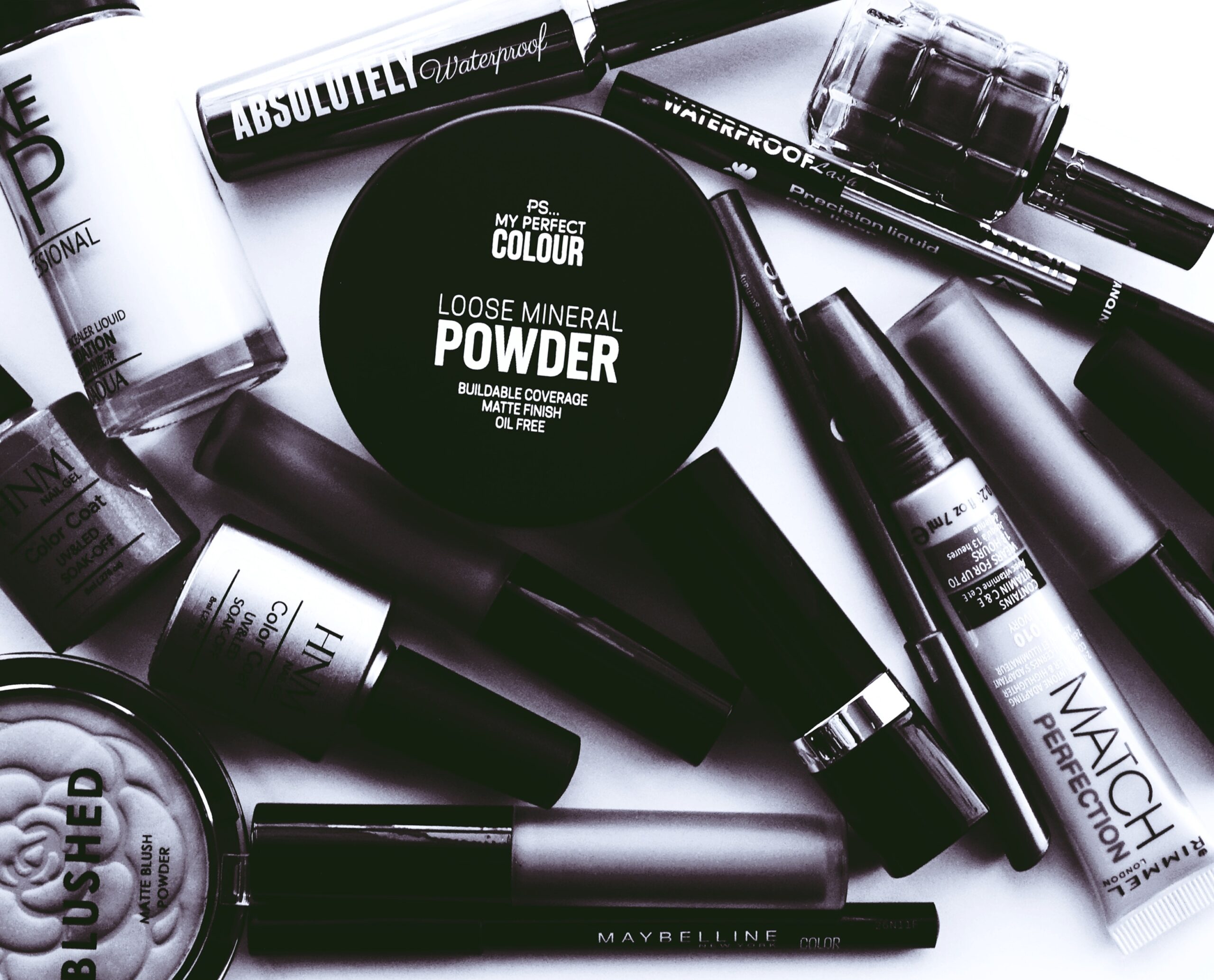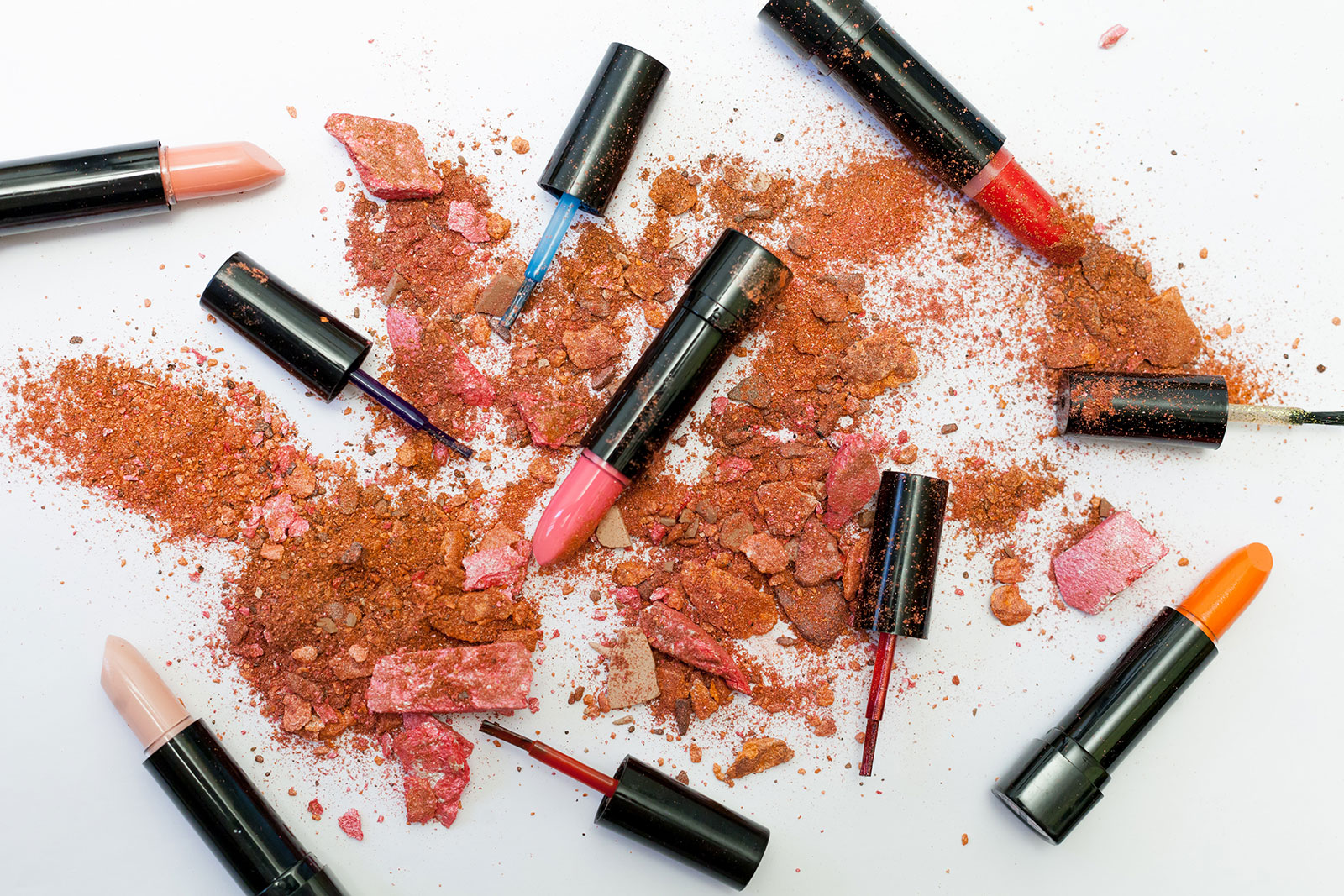Since 2018, the Los Angeles Police Department has confiscated more than $1 million worth of counterfeit cosmetics from Los Angeles’ Fashion District. This section of LA is known for selling knockoff products — handbags, clothes, shoes and other accessories that are cheaply manufactured to imitate designer pieces without the unattainable price tag. But skincare products and cosmetics are also on offer, usually featuring packaging that is a near-perfect imitation of the real thing.
These counterfeit products can also be mass-produced, creating a surplus of supply that is in complete opposition with legitimate brands’ scarcity marketing tactics. Kylie Cosmetics’ lip kits famously sell out seconds after becoming available on the brand’s website, mostly bolstered by the celebrity of the brand’s founder, reality TV star Kylie Jenner. When fans aren’t able to purchase a Kylie Cosmetics product, they might end up unknowingly purchasing a counterfeit product at an unlicensed location or online.
While counterfeit clothes and accessories might have a negative impact on a brand’s bottom line, counterfeit cosmetics are much more of a concern for the individual consumer. This is because counterfeit cosmetics, like those seized in the LA raids, have been found to contain harmful bacteria, toxic chemicals and, perhaps worst of all, cancer-causing carcinogens.
Cancer Wellness has reported extensively on the loosely regulated cosmetics industry (see “The Devious Language of Cosmetics,” “Cleaning Up the Cosmetics Industry” and “Beauty & the Beast”), but legitimate cosmetics companies are still required to follow certain governmental regulations before they can be marketed and sold in department stores and beauty boutiques. Counterfeit cosmetics, however, bypass any type of government oversight designed to keep consumers safe.
The U.S. Food and Drug Administration (FDA) does not require that cosmetics products have its approval before going to market, but laws like the Federal Food, Drug, and Cosmetic Act (FD&C Act) and the Fair Packaging and Labeling Act (FPLA) must be followed. The FD&C Act prohibits marketing of “adulterated” cosmetics, meaning those that contain “any poisonous or deleterious substance which may render it injurious to users,” or contain “any filthy, putrid, or decomposed substance,” according to the FDA’s website. The Act also prohibits “misbranding,” meaning false or misleading labeling.
By very definition, counterfeit cosmetics are guilty of misbranding, as they are attempted replicas of legitimate products. And many counterfeit cosmetics have also allegedly been produced in facilities with unsanitary working conditions (or sometimes even on private property, like someone’s personal garage or basement) — the result of which can lead to serious health problems in users like infections from human or animal waste contamination.
The most prevalent carcinogens that have been found in counterfeit cosmetics are the heavy metals arsenic, beryllium and cadmium.
According to Dr. Tanya Khan, a board-certified ophthalmologist and oculoplastic surgeon, any makeup, regardless of whether it contains harmful bacteria, can irritate the face and eyes if it is not cleaned properly. “We really encourage having good eyelid hygiene no matter what type of cosmetics you use,” Khan says. “With counterfeit cosmetics, the list of ingredients is not known, and there’s oftentimes things like animal waste product or impure, non-sterilized ingredients. […] And that can lead to pretty severe eyelid or eye infections.”
Painful or difficult to treat infections are unpleasant, but non-sterilized or foreign objects in the eye can theoretically change the architecture of the eye itself, according to Khan. “That’s when we worry about a potential cancer.”
Carcinogens are a separate issue entirely. The most prevalent carcinogens that have been found in counterfeit cosmetics are the heavy metals arsenic, beryllium and cadmium. Exposure to heavy metals can cause cardiovascular and neurological diseases, as well as various cancers, due to how they damage DNA. The American Cancer Society notes that arsenic exposure can cause lung, bladder and skin cancers, but ACS also links arsenic exposure to elevated risk of kidney, liver and prostate cancers. There is also a wealth of research available about how other heavy metals are linked to increased cancer risk.

But it’s not only street vendors hawking potentially dangerous products. Counterfeit cosmetics have also infiltrated online megastores, like Amazon and eBay. Counterfeits have even been found on the shelves of an Australian Target, according to a November 2017 article in Allure magazine.
Unfortunately, it’s almost impossible for Amazon and similar sites to adequately prevent sales of counterfeit products, despite advanced algorithms targeting this very thing. Most counterfeit products come from unvetted third-party sellers who now account for 54 percent of all sales on Amazon (about $160 billion annually) — a significant increase from the 3 percent recorded in the year 2000, according to a February 2020 story on the New York Times’ product review website Wirecutter. Wirecutter also notes that a single product page could include listings from both the legitimate manufacturer as well as third-party sellers. “It’s as though those back-alley and swap-meet sellers have gotten to put their wares inside the store, on the same shelf as the real goods. And product placement relies on an algorithm that can push the cheapest version to the front of the shelf,” the article says.
The Wirecutter article also reports on various investigations that uncovered thousands of unsafe product listings on Amazon, ranging from counterfeit cosmetics to expired food. The piece darkly concludes with the line, “Welcome to the era of fake products.” As technology advances and more consumers gain access to the internet, you can expect the counterfeit trade to only trend upward. That’s why consumers who want to feel confident about their safety and well-being will have no choice but to spend that much extra time and money doing the research and buying straight from a verified source.
Most counterfeit products come from unvetted third-party sellers who now account for 54 percent of all sales on Amazon (about $160 billion annually) — a significant increase from the 3 percent recorded in the year 2000,
This could be easier said than done. If a product is received as a gift, for instance, it might be difficult to confirm where it was purchased. Or maybe you’ve had a good experience at places like eBay or Amazon and you don’t want to write those sites off entirely. If this sounds familiar, there are some other precautions a consumer can take.
Many victims of counterfeit cosmetics share the experience of detecting if something is counterfeit based on consistency or smell. This is easier for products for which someone might be familiar — a favorite fragrance lacks its signature scent, or a trusted lipstick doesn’t glide on as smoothly as normal. These are the marks of clear counterfeits.
Price, however, is the most important signifier of counterfeit. A February 2018 article in InStyle magazine notes that brand-name products will have similar price points no matter where they are sold — so the MAC lipsticks going for a fraction of their usual price definitely are too good to be true.
Labels are helpful in spotting counterfeits, too. InStyle notes uneven fonts, misspellings and even incorrect shade names should be clear giveaways, as well as other packaging inconsistencies, like ill-fitting containers, exposed cardboard or labels that are slightly off-color when compared with legitimate counterparts. Fortunately, most of these things can easily be cross-referenced on brand websites or with products you already have at home.
So, the next time you’re searching for the latest, trendiest cosmetic, or happen upon a deal that seems too good to be true, make sure you do your homework. “You really can’t trust the validity unless you are purchasing these products from a licensed store or professional,” Khan says. “If it’s an Estee Lauder product but it was purchased where you wouldn’t [normally] purchase Estee Lauder, do a comparison check to make sure you’re using the real thing, and if it’s not [you should] probably trash it, or let someone know the product might be compromised.” Your health is at stake.







